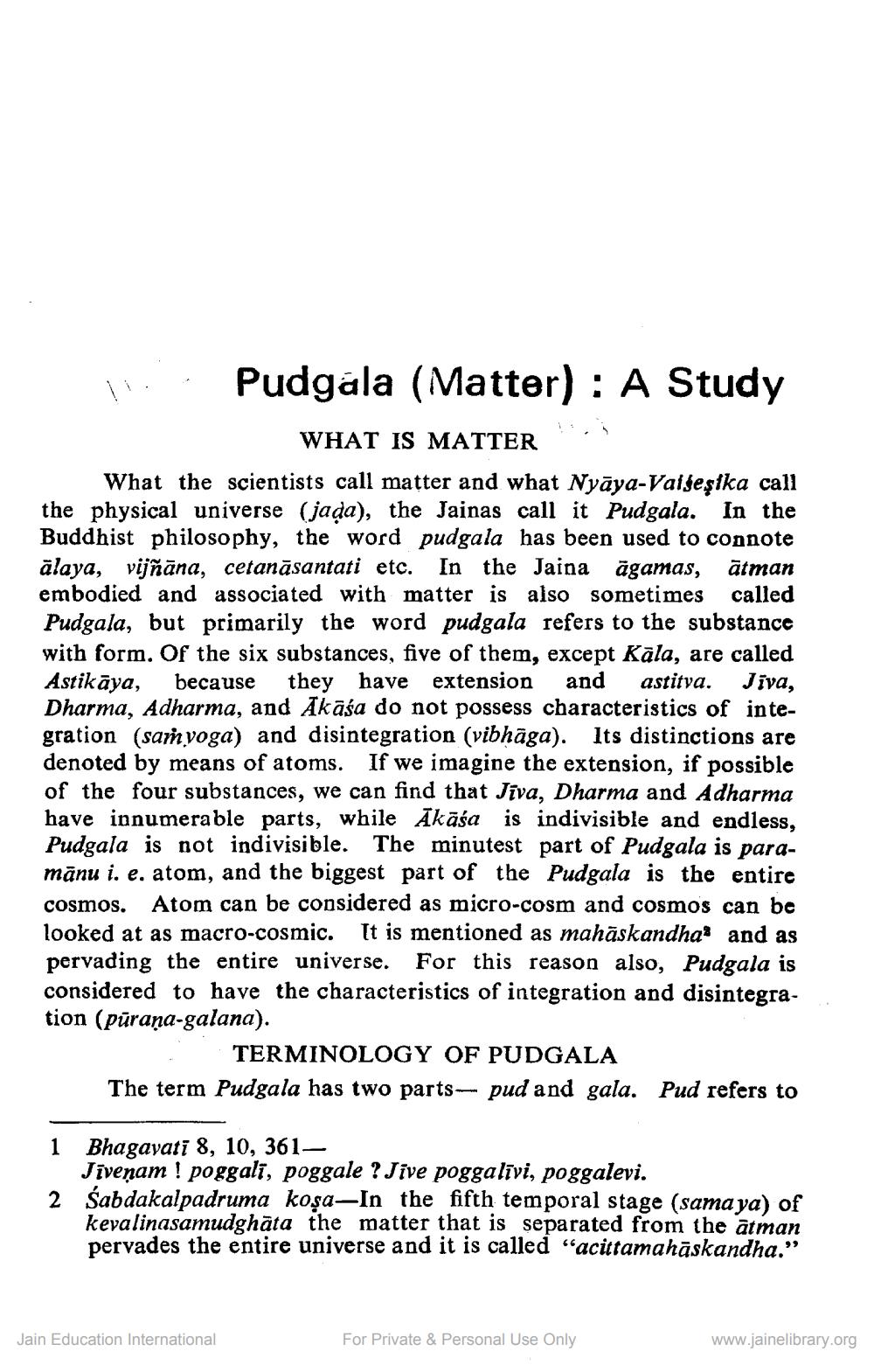________________
li.. Pudgala (Matter): A Study
WHAT IS MATTER What the scientists call matter and what Nyāya-Valgesika call the physical universe (jada), the Jainas call it Pudgala. In the Buddhist philosophy, the word pudgala has been used to connote alaya, vijiāna, cetanāsantati etc. In the Jaina ägamas, atman embodied and associated with matter is also sometimes called Pudgala, but primarily the word pudgala refers to the substance with form. Of the six substances, five of them, except Kāla, are called Astikāya, because they have extension and astitva. Jiva, Dharma, Adharma, and Akāśa do not possess characteristics of integration (saryoga) and disintegration (vibhāga). Its distinctions are denoted by means of atoms. If we imagine the extension, if possible of the four substances, we can find that Jiva, Dharma and Adharma ave innumerable parts, while Akāśa is indivisible and endless.
ala is not indivisible. The minutest part of Pudgala is paramānu i. e, atom, and the biggest part of the Pudgala is the entire cosmos. Atom can be considered as micro-cosm and cosmos can be looked at as macro-cosmic. It is mentioned as mahāskandha and as pervading the entire universe. For this reason also, Pudgala is considered to have the characteristics of integration and disintegration (pūraņa-galana).
TERMINOLOGY OF PUDGALA The term Pudgala has two parts-pud and gala. Pud refers to
1
Bhagayati 8, 10, 361– Jīveņam ! poggalī, poggale ? Jive poggalīvi, poggalevi. Śabdakalpadruma koşa-In the fifth temporal stage (sama ya) of kevalinasamudghāta the matter that is separated from the ātman pervades the entire universe and it is called “acittamahāskandha."
Jain Education International
For Private & Personal Use Only
www.jainelibrary.org




